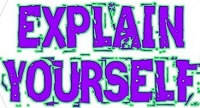31. An operational system is _____________.
A. used to run the business in real time and is based on historical data.
B. used to run the business in real time and is based on current data.
C. used to support decision making and is based on current data.
D. used to support decision making and is based on historical data.
ANSWER:
B
32. The generic two-level data warehouse architecture includes __________.
A. at least one data mart.
B. data that can extracted from numerous internal and external sources.
C. near real-time updates.
D. far real-time updates.
ANSWER:
C
33. The active data warehouse architecture includes __________
A. at least one data mart.
B. data that can extracted from numerous internal and external sources.
C. near real-time updates.
D. all of the above.
ANSWER:
D
34. Reconciled data is ___________.
A. data stored in the various operational systems throughout the organization.
B. current data intended to be the single source for all decision support systems.
C. data stored in one operational system in the organization.
D. data that has been selected and formatted for end-user support applications.
ANSWER:
B
35. Transient data is _____________.
A. data in which changes to existing records cause the previous version of the records to be eliminated.
B. data in which changes to existing records do not cause the previous version of the records to be eliminated.
C. data that are never altered or deleted once they have been added.
D. data that are never deleted once they have been added.
ANSWER:
A
36. The extract process is ______.
A. capturing all of the data contained in various operational systems.
B. capturing a subset of the data contained in various operational systems.
C. capturing all of the data contained in various decision support systems.
D. capturing a subset of the data contained in various decision support systems.
ANSWER:
B
37. Data scrubbing is _____________.
A. a process to reject data from the data warehouse and to create the necessary indexes.
B. a process to load the data in the data warehouse and to create the necessary indexes.
C. a process to upgrade the quality of data after it is moved into a data warehouse.
D. a process to upgrade the quality of data before it is moved into a data warehouse
ANSWER:
D
38. The load and index is ______________.
A. a process to reject data from the data warehouse and to create the necessary indexes.
B. a process to load the data in the data warehouse and to create the necessary indexes.
C. a process to upgrade the quality of data after it is moved into a data warehouse.
D. a process to upgrade the quality of data before it is moved into a data warehouse.
ANSWER:
B
39. Data transformation includes __________.
A. a process to change data from a detailed level to a summary level.
B. a process to change data from a summary level to a detailed level.
C. joining data from one source into various sources of data.
D. separating data from one source into various sources of data.
ANSWER:
A
40. ____________ is called a multifield transformation.
A. Converting data from one field into multiple fields.
B. Converting data from fields into field.
C. Converting data from double fields into multiple fields.
D. Converting data from one field to one field.
ANSWER:
A



